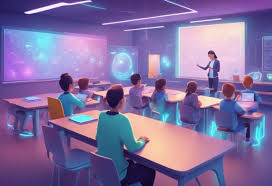Understanding the cognitive and developmental impact of media consumption has become essential knowledge for every teacher working with young children. Particularly noteworthy is the significant role that well-designed kids animated shows play in early childhood development, offering unique benefits that complement traditional teaching methods in fascinating ways that researchers are only beginning to fully understand.
Educational psychologists have identified numerous cognitive processes that are activated when children engage with quality animated content, including pattern recognition, sequential thinking, and narrative comprehension. These mental activities form the foundation for more advanced academic skills that will be developed throughout the educational journey. Teachers who understand these connections can more effectively bridge entertainment and education.
The psychological concept of parasocial relationships—the one-sided connections children form with fictional characters—provides powerful opportunities for learning. When children feel connected to animated characters, they become more receptive to the lessons these characters demonstrate. This emotional investment creates a form of mentorship that teachers can leverage by referencing these characters when introducing related concepts in the classroom.
Color psychology also plays a significant role in how animated content affects learning. Research has shown that different colors stimulate various parts of the brain, influencing mood, attention span, and information retention. Well-designed animated programs utilize this science deliberately, using color schemes that enhance cognitive processing and emotional engagement with educational content.
The pacing of animated shows is another psychological element that impacts learning outcomes. Programs designed for educational purposes typically feature deliberate pacing that allows for cognitive processing, with strategic pauses built in for reflection. This contrasts with purely entertainment-focused animation, which often employs rapid scene changes that can overwhelm developing attentional systems.
Narrative structures in educational animation typically follow patterns that reinforce important cognitive skills. Problem identification, solution generation, consequence evaluation, and reflection sequences mirror the critical thinking processes that educators strive to develop in students. This parallel between story structure and thinking structure creates natural opportunities for cognitive development.
Memory formation is enhanced through the multimodal learning experience that animation provides. When information is presented through combined visual, auditory, and narrative channels, it creates multiple neural pathways to the same information. Teachers who understand this principle can reference animated content when introducing new concepts, essentially providing students with additional memory retrieval cues.
The psychological principle of scaffolding is often expertly embedded in educational animation. Shows frequently introduce basic concepts first, then gradually build upon this foundation as episodes progress. This approach mirrors best practices in education and provides teachers with models for how to structure their own lesson sequences for optimal comprehension and retention.
Social learning theory is particularly relevant when examining the educational impact of animated shows. Children readily observe and imitate the behaviors of characters they admire, internalizing not just actions but also problem-solving approaches and emotional regulation strategies. This makes the careful selection of appropriate animated content crucial for teachers who wish to harness this natural learning tendency.
Recent advances in neuroscience have confirmed what many educators intuitively understood: the brain’s reward systems are activated when learning occurs through enjoyable experiences. The dopamine release associated with engaging animated content creates positive associations with the educational concepts being presented, potentially increasing motivation for related learning activities in the classroom setting.

